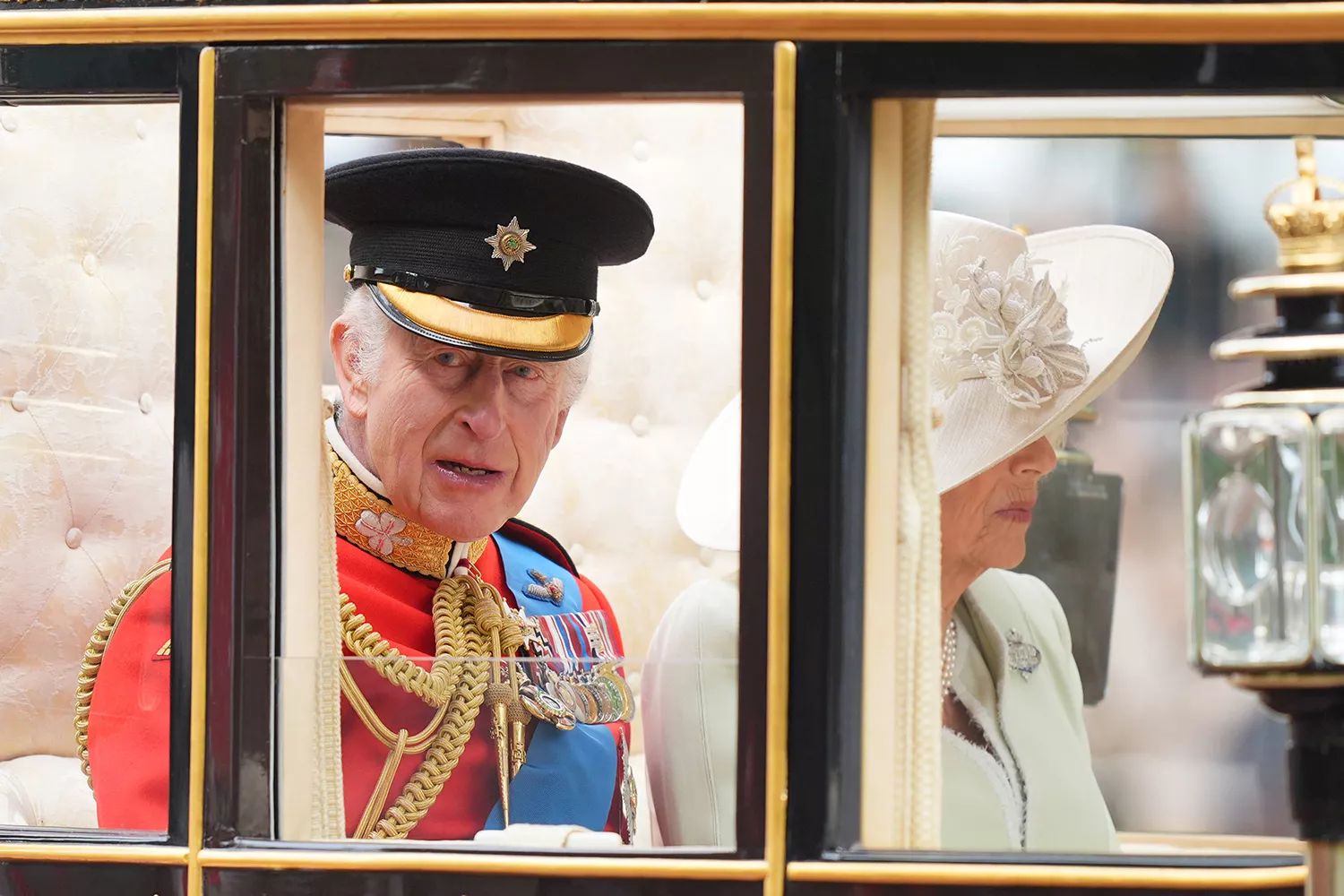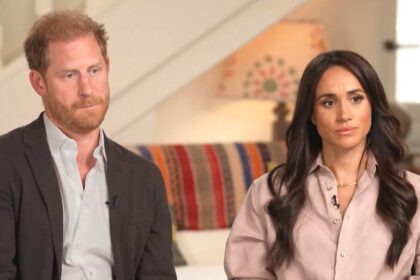King Charles attended the annual public celebration of his birthday on June 15 in London, marking the second Trooping the Colour since becoming monarch.
The event, featuring a stunning procession of military personnel and a Royal Air Force flypast soaring through the skies over the city, has marked the British monarch’s official birthday for over 260 years.
It was confirmed on May 30 that King Charles would attend the event amid his cancer treatment with a small change in his participation.
Instead of riding on horseback as he did in previous years, the royal took part in the procession seated in a horse-drawn carriage alongside Queen Camilla.
For the ceremony, the King wore the tunic of the Guard of Honour Order made of bearskin with a blue garter sash, in honor of the regiment’s color being trooped, with the cypher of his mother and predecessor, Queen Elizabeth and decorations of Noble Order military and knight garters.
King Charles also wore a selection of medals, including Queen Elizabeth’s 1953 Coronation medal, along with the late monarch’s jubilee medals from throughout her reign, from the silver to platinum, obtained in 2022.
Camilla, meanwhile, wore a pale green silk crepe dress and coat by Anna Valentine and a hat by favored royal designer Philip Treacy. The monarch, who is Colonel-in-Chief of the Grenadier Guards, accessorized her look with her Grenadier Guards military brooch.
Queen Elizabeth switched from participating in the event on horseback to riding in a coach when she was 60, 15 years younger than her heir is now. The history-making monarch, who died in Sept. 2022, last rode during Trooping the Colour in 1986 on her beloved horse Burmese.
King Charles first attended Trooping the Colour at age 3 when it celebrated his grandfather, King George VI. For his debut, the future monarch rode in a carriage with his grandmother, Queen Elizabeth the Queen Mother, and his aunt, Princess Margaret. His mother, the then-Princess Elizabeth before acceded the throne the following year, was riding horseback in the procession.
Members of the royal family again joined King Charles on the big day, including his daughter-in-law Kate Middleton in her first public appearance since announcing her cancer diagnosis in March. The Princess of Wales, 42, shared her plan to attend Trooping the Colour on the day prior, writing in a personal message, “I’m looking forward to attending the King’s Birthday Parade this weekend with my family and hope to join a few public engagements over the summer, but equally knowing I am not out of the woods yet.”
A Buckingham Palace spokesperson said on June 14, “His Majesty is delighted that the princess is able to attend tomorrow’s events and is much looking forward to all elements of the day.”
The Trooping the Colour festivities began when the procession departed Buckingham Palace, heading down The Mall in London to Horse Guards Parade at St. James’ Park. There, King Charles and other members of the royal family will watch the Irish Guards “troop their colour,” or present their flag.
King Charles, Queen Camilla and the rest of the royal family will then travel back to Buckingham Palace, where they will gather on the royal residence’s iconic balcony to watch the flypast.
There was speculation if King Charles’ birthday parade would proceed as normal this year. King Charles and Prince William canceled scheduled engagements after Prime Minister Rishi Sunak announced on May 22 that a general election would be held in July after Buckingham Palace said the royals would postpone outings “which may appear to divert attention or distract from the election campaign.” Each event would be assessed on a case-by-case basis, and the Ministry of Defense confirmed on May 29 that Trooping the Colour would go on as scheduled.
According to the British Army, the ceremonial presentation of the military’s regimental flags, called “colours,” is believed to have first been performed during the reign of King Charles II, who ruled from 1660 to 1685. The parade was first formally linked to the monarch’s birthday during the reign of King George II in 1748 and got a permanent spot on the royal calendar following the accession of King George III in 1760.




